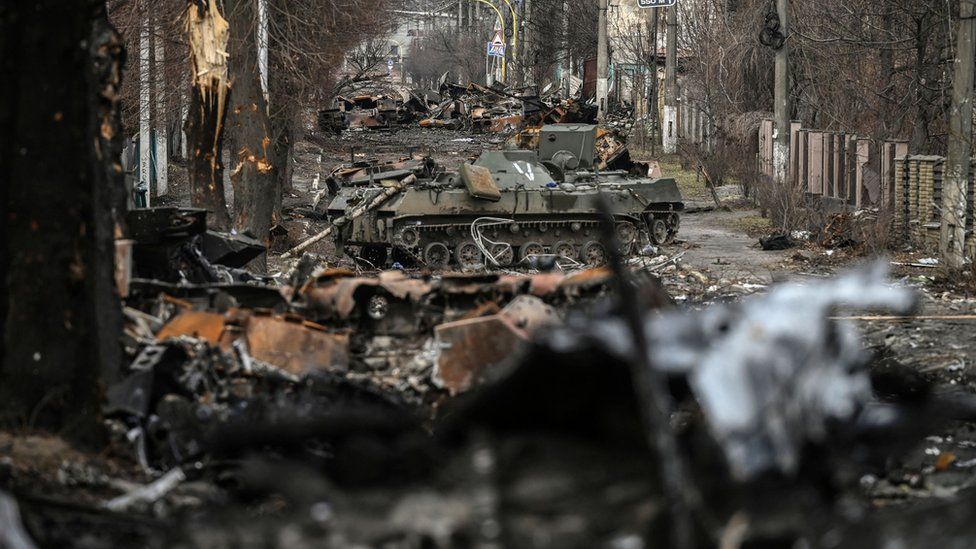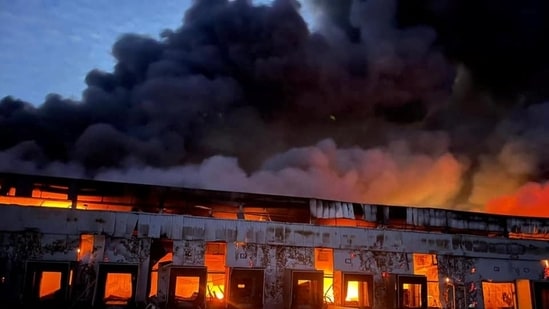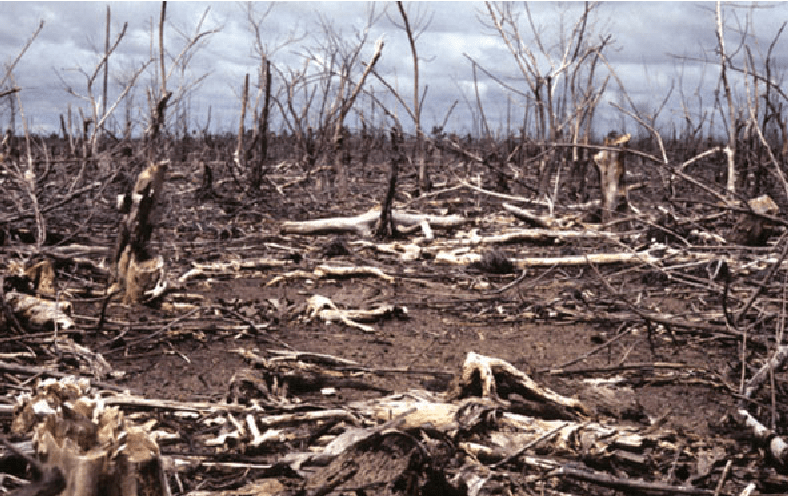
"Scorched earth" has a variety of meanings in warfare. There is significant concern about the impact of military operations on the environment and the areas in which people live. That can suffer catastrophic harm as a result of the battle.
Military action has the potential to contaminate water supplies and tear upland. Chemical, gas and other pollutants that can enter the ground have long-term effects, including toxicity. The issues of food security and availability are amplified by these environmental conditions.
Environmental damage is an unavoidable outcome of war activities in any setting. Even in ancient times, the massing of soldiers "destroyed the crop and transformed the battlefield to muck," according to historical studies. The destructive capacity of today's weapons and contemporary combat strategies has dramatically increased the environmental consequences of military operations.
Read more about the Ecological consequences of war over the years
Population expansion, extensive exploitation and use of natural resources, and systematic damage and fragmentation of ecosystems as a result of urbanization, mechanical forest destruction, and transportation networks all have negative effects on the environment.
Various ongoing conflicts throughout the globe are causing mayhem on ecosystems. Tremendous conflicts demand and use large amounts of fuel, resulting in high carbon dioxide emissions and contributing to climate change. Smoke from flames has a negative impact on the environment and on civilians caught in the middle of a dispute.
As the Russia-Ukraine war continues, learn how Russia’s attack is literally tearing the country apart.

When industrial, oil, or energy facilities are actively targeted, accidentally destroyed, or disturbed, severe pollution crises can occur. Attacks against oil or industrial facilities have been used as a weapon of war in the past to contaminate broad regions and create panic.
During wars, weapons and military equipment leave environmental imprints. Land mines, cluster bombs, and other explosive remains of war can restrict access to agricultural land and damage soils and water supplies with metals and harmful energetic elements, limiting access to agricultural land.
Large quantities of military scrap may be created or abandoned after significant conflicts. This can contain a variety of toxic compounds, poisoning soils and groundwater, and exposing individuals who work on it to acute and chronic health concerns. Marine pollution can be caused by sunk or destroyed ships, submarines, and offshore oil facilities.
10 Leading Environmental Concerns That Require Our Immediate Attention.
Environmental damage during and after Conflicts
- Deforestation rises during the times of conflict. Overharvesting by communities that are suddenly reliant on wood and charcoal for fuel and warmth is a major cause of this. However, it might also be the consequence of armed or criminal gangs exploiting the failure of management mechanisms. Civilian coping techniques can also lead to overharvesting of other natural resources, as well as ecologically harmful behaviours like artisanal oil refining.

- Many wars result in human relocation. Camps for refugees and internally displaced persons can have significant environmental impacts. Especially if they are unplanned or lack basic facilities such as water, sanitation, and waste management. Their location is particularly crucial since camp occupants may be forced to consume local resources like firewood, putting local resources under strain. Internally displaced people may migrate to metropolitan areas as a result of war, causing population growth and straining local environmental services.
- Large-scale refugee migrations can have transboundary environmental consequences. As communities in neighboring nations struggle to cope with the inflow of people and provide their basic requirements,
- Waste management is a basic issue in both displacement camps and conflict-affected metropolitan areas. During times of conflict, systems frequently fail, resulting in increased garbage dumping and burning, poor waste management, and a lack of waste segregation. During wars, waste management systems are simply one aspect of environmental governance that may fail.
- Environmental rules and regulations may be disregarded on a local level. Local and national governments may lose their ability to monitor, analyze, and respond to environmental issues. New administrations may arise, with an approach to environmental management that differs significantly from that of the government. In recent years, there has been a rising tendency of using environmental data as a weapon during conflicts, resulting in greater politicization of environmental threats.
Environmental damage after conflicts
Conflicts seldom end peacefully with a peace accord and a ceasefire these days. Conflict and instability at a low level might last for a long time. Weak state authority is a hallmark of peace transitions. It implies that environmental governance, and the capacity to deliver it, are frequently missing.
When faced with a slew of conflicting social and economic goals, environmental concerns are frequently overlooked, many post-conflict environmental issues are caused by these settings. Peace and power-sharing agreements have hampered governance in some cases by fragmenting political regimes.
States and international players may be confronted with immediate legacies such as massive amounts of wreckage and debris in the aftermath of hostilities.
Land rights and ownership difficulties are typical in conflicts with high levels of displacement, especially when returnees return home. People inflows can exacerbate environmental constraints in regions where they have previously been absent, especially through agricultural conversion or development. Deforestation rates may rise as a result of this. Many post-conflict nations have seen a substantial spike in deforestation rates, with clearing exceeding the state's capacity to regulate it, according to research.
7 Young Climate Activist You Should Know About
Military forces can stay in a post-conflict situation for a long time. Pollution is linked to the operation and eventual closure , especially when the host nation is unable to enforce environmental norms.
Conclusion
While armed wars and military actions can result in or assist a variety of environmental harms, managing the environment during and after conflicts can help to build and preserve peace, as well as reshape society via long-term rehabilitation.
Shared natural resources, as well as similar environmental hazards that go over human boundaries and borders. They might serve as a springboard for discussion between warring parties. Unpredictable energy supply during wars might drive a switch to solar power. While the destruction caused by hostilities can be a chance to rebuild greener or develop new domestic legislative frameworks to manage resources responsibly.
These prospects, however, are contingent on a greater focus on the environment before, during, and after conflicts. And, if we overlook the environment after a war, we risk not only missing out on prospects for long-term healing but also setting nations up for new resource disputes.
Hi Better Earthlings, Got any sustainable stories to share?
Write to us: aradhya@thebetterearthlings.com






